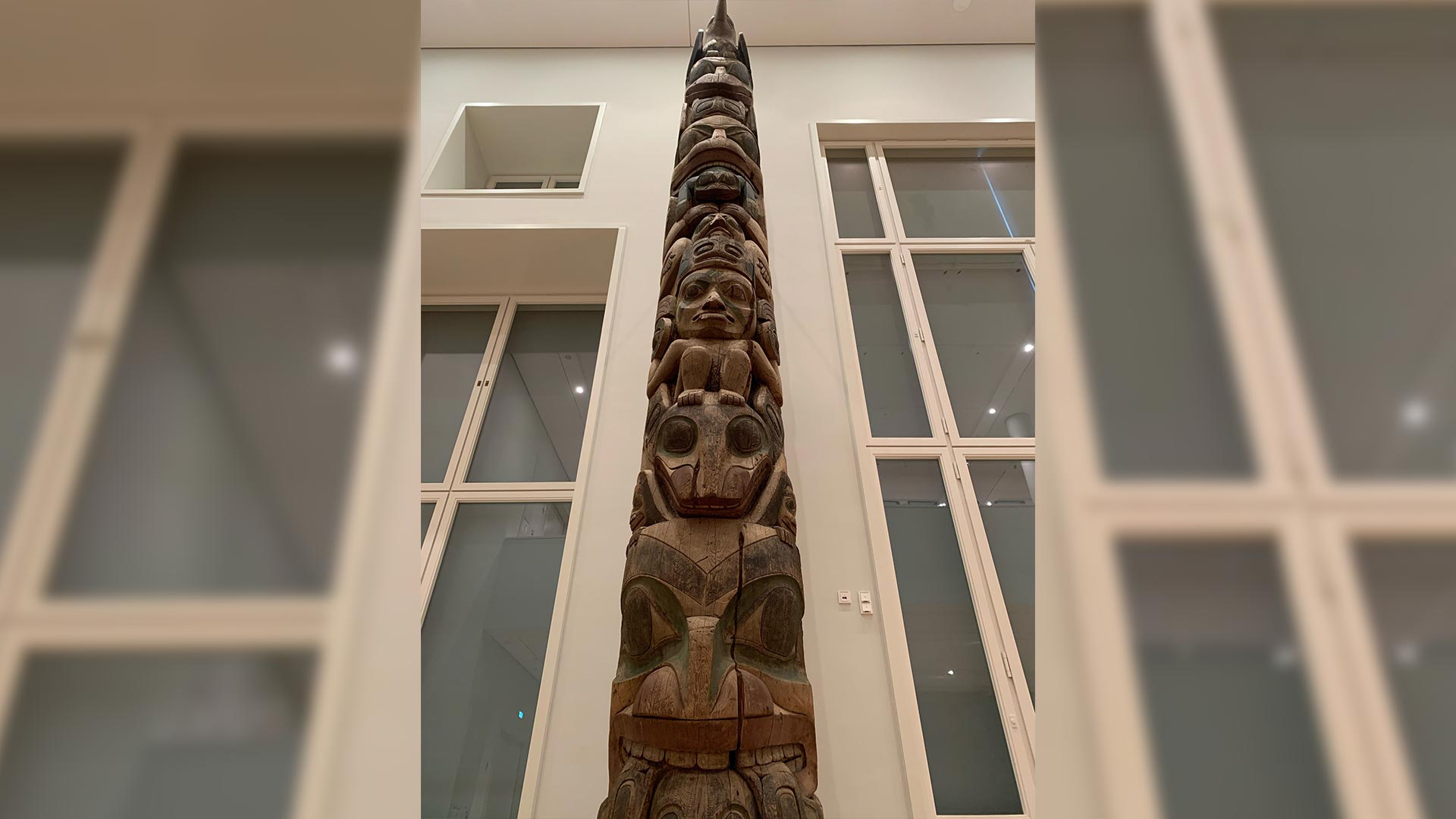The totem pole is an icon of Northwest Coast First Nations.
They often depict the stories and deeds of families and clans, commemorate the missing and murdered, stand as a symbol of reconciliation, or of nation-to-nation solidarity against land exploitation.
Though it’s strange to spot them on the east coast of Canada – in cities like Montreal, for example – it’s stranger still to spot them thousands of kilometers overseas, in a country like Germany.
Looming over a climate and light-controlled room in the Humboldt Forum Museum in Berlin are two coastal totem poles purchased in the late 1800s by a Norwegian explorer.
“A collector, Johan Adrian Jacobsen, travelled in the 1880s in the west coast of Canada, and on Haida Gwaii, he bought these poles from the brother of the first owner,” explained Monika Zessnik, curator of the North American collection at the German museum.
Jacobsen, a prolific collector, would go on to bring over 3,000 First Nations items from the Canadian west back to Germany.
One of the Haida totem poles figuring as the centerpiece of the Humboldt Forum’s upcoming 2022 exhibition was purchased on Haida Gwaii for close to $65.
Adjusted for inflation, Jacobsen would’ve paid close to $1,800 in 2021 – but the pieces’ value far exceeds their turn-of-the-century ticket price, according to Zessnik.
“If you compare it with costs for logistics or transport – it was much, much less,” she told APTN News.

Zessnik says the upcoming exhibit will combine traditional knowledge with modern perspectives – an important pairing when presenting First Nations objects in museums in the present day.
“We will kind of have counter-narratives to Jacobsen’s 19th century narratives as a collector who was collecting in times of European colonialism, as well as perspectives from First Nations representatives today,” she added.
“I’m still learning – and we hope that this process of transcultural cooperation will go on.”
For nearly 150 years, Indigenous objects from North America have been upheld as “cultural curiosities” in Germany, thanks to the written work of the country’s most-read author, Karl May, and his creation: the Apache warrior “Winnetou.”
Zessnik acknowledges that in 2021, May’s beloved literary character reads more like a caricature.
“There are very different cultures, different languages, different cultural productions – and I think that’s very important to teach,” Zessnik explained.
“I mean, it’s not only cultures with feathers and poles.”
So how is the museum working to counter these stereotypical narratives? How has the “Winnetou” phenomenon impacted the real-life experiences and perceptions of Indigenous people who venture overseas into Germany?
Learn more in the video above.
Correction: The story originally said the author’s name was William May. It has been corrected to Karl May.









